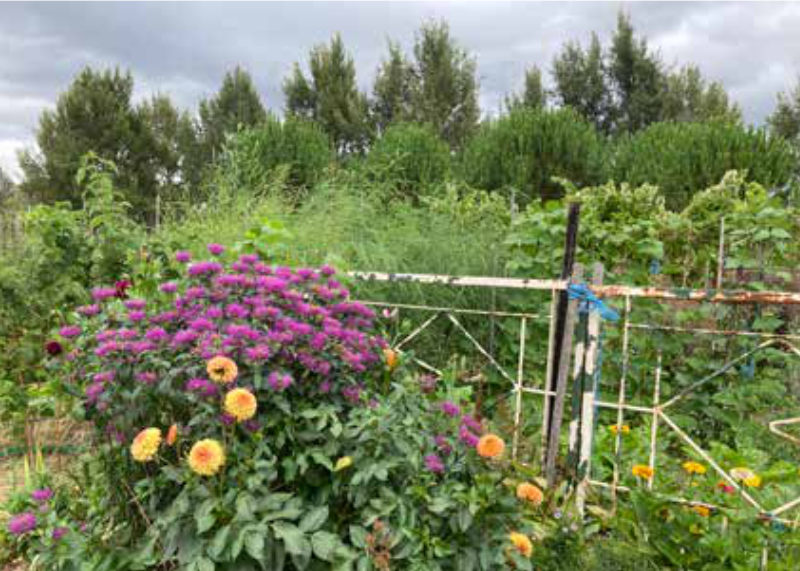A tale of renewal after Canberra’s bushfires
Article: (Canberra Organic – Autumn 2023)
After one our wettest years on record in 2022, it is hard to fathom the events that occurred twenty years ago. On Wednesday 18 January 2023, Canberra marked twenty years since two large bushfires — that began in the Brindabellas and Namadgi — combined to wreak havoc on our western fringes. The Holder community garden was in the path of the fire, damaging the garden and leaving its mark on the lives of members and people in the surrounding community. Two years prior the Betty Cornhill community garden also suffered from a fire that was a portent of the bigger things to come (see separate insert).
For many Canberrans, Saturday 18 January 2003 began like any other Saturday with people going about their normal routines. But it was hot early, and the wind was picking up. We were aware of the bushfires to our west, but most of us didn’t really give it a second thought. Around midday water bombing helicopters were flying over roof tops in Weston Creek, the sky grew dark and before too long people were on their roofs wetting their houses. By the end of the day over 500 homes had been destroyed and tragically four people had lost their lives.

Standing at Holder community garden the next day trying to make sense at what had happened, there was air of quietness with the pungent smell of smouldering smoke. The full reality of what had happened would hit most of the garden members in the following weeks. Holder garden convenor at the time Stephen Dean wrote in the 2003 Canberra Organic magazine autumn edition:
“Our deepest sympathies and support for three Holder gardeners who lost their homes in Duffy during the recent bushfires. The fires destroyed 12 of our plots, together with 35 expensive bales of straw, approximately 35 hardwood sleepers and several hoses and trickle irrigation systems. Another 12–15 plots suffered lesser damage with crops partially burnt or scorched. Our small orchard of fruit trees and our windbreak bushes were all destroyed or damaged by the intense fires. Since the bushfires an aggressive 1.5m brown snake has taken up residence in our garden — extreme caution and long trousers and boots are now necessary!!”
Water bombing done in the area to save other structures such as the AFP complex across the road meant the garden was not destroyed. However, the surrounding area had a new landscape. The pine forest to the west of the garden was burnt out. The ACT Government decided to turn the former pine plantations into a housing division known as Molonglo — which now provides a source of new members for the garden. All the pines on John’s Reserve were removed and replaced with mature casuarinas. A small bonus — the garden had access to some of the piles of woodchips!
The hot weather continued for the rest of the summer and rainfall was minimal. Water restrictions required careful watering of garden plants. With the surrounding forest gone, the garden was exposed for more than a decade while waiting for the new trees to fill the gaps. Now beautiful stone pines stand and offer some wind protection. In 2008, with the new residential development happening nearby, the Holder community garden had a choice to move or stay. It was decided that the garden would stay, surrendering land for a bike path and a major road, but it gained extra land to south and a carpark area to the west. In the past 20 years the garden has gone from been surrounded with pine trees, to open paddocks and new suburbs, but the garden is thriving in its niche.
The rise of the ‘Phoenix Garden Group’
Many left behind in the Duffy community were surrounded by the destruction of homes and gardens. Our lives were confused and uncertain. But the community had already swung into action with donations of food and clothing and everyday provisions to share. Generosity was everywhere and overwhelming. Duffy Primary School was the centre of our community and the place where people could meet, find lost friends, connect with services and support. During those early days it was apparent that those dwellings left standing were housing traumatised people. There was no colour, no green life, no birds or sounds, only black smouldering days, so that first belladonna lilly poking its pink flowered head from the charred remains, was a sign of hope that recovery was possible.
Gardening seemed the way to recovery for some of us who were horticulturists and friends. We were all fire affected in some way and doing something was the only option. We felt a great need to make our suburbs green again. We quickly became a small effective group, combining our skills and backgrounds, bringing together resources that could benefit our community. It was about 3 weeks after the 2003 fires that the ‘Phoenix Garden Group’ was born. We quickly established the needs of individuals and were a listening ear. Many had fallen trees and burnt shrubs that they could not remove themselves. So, we formed small teams of volunteers to work together to assist the homeowner to begin recovery. Removal of burnt debris, pruning shrubs, and attempting to restore and begin again gave hope and encouragement. It became infectious and the volunteer numbers grew, enabling more assistance to those in need.
Part of our activities involved propagating and a small team met to grow using donated plants and to source plants from elsewhere. Local nurseries, as well as nurseries in Melbourne and Sydney, donated plants and potting mix. Large hardware chains donated tools and wheelbarrows, bagged supplies of compost and potting mix for us. The ACT Government came on board and donated mulch supplies and equipment enough for us to fill trailers. We had no funding and managed the project on goodwill, time and energy from many. The then CIT Weston School of Horticulture gave us the use of a large shade area with irrigation to grow and distribute plants to those in need. The Phoenix Garden Group ran for two years. We met monthly to clean up, propagate and grow plants. We managed to grow over 10,000 plants in those years. Gardening and giving enabled many of us in the group to begin our own journey of healing and connecting to our community, and brought a sense of togetherness and hope for the future. Gardening led the way to recovery from dark black days and gave us the sense of renewal. Now 20 years later we can look back with pride at our involvement in helping to heal the landscape and the people that live in it. We again live in a leafy community which has recovered.

With thanks to the contributions and recollections of Lesley Pattinson and Paulene Cairnduff (members of the Holder community garden and the Phoenix Garden Group), Conrad Van Hest and Jen Johnston. Thanks also to Andy Hrast for the BCG story.
2001 Bushfire – Betty Cornhill Garden
Christmas Eve 2001 was hot with a strong north westerly wind. A fire started somewhere to the west of the Coppins Crossing Road and quickly burnt towards the Yarralumla Woolshed and the Governor General’s residence. Their protection was the primary, and successful focus, of the emergency services.
The Betty Cornhill Garden (BCG) was directly in line of the fire and was severely impacted. The contents of the garden shed were destroyed but the shed itself survived and is still in use. It’s now known as the ‘old shed’. Large pines on the northern boundary of the garden were burnt as well as a number of blue gums. The impact on the plots was significant with plantings, wooden garden edging and compost bins burnt. Immediately after the fire, gardeners worked on the plots to save their crops. Surprisingly much of the vegetable plantings although burnt survived and went on to produce a crop, albeit late and diminished.
Tools were replaced and some were able to be repaired. In the aftermath of the fire, ACT Parks brought in heavy machinery to make safe the areas around the burnt large trees and then cut them down. Over the following few years there was an explosion in the germination of blue gums and wattles creating dense copses.
In the longer term the fire proved beneficial to the garden. The large pines on the northern boundary which had shaded a significant part of the garden were removed providing more sun. That area has since been developed into additional plots. A planting of poplars in the neighbouring horse paddocks which had been proving invasive and sucking up water at prodigious rates from the nearby plots were killed by the fire and removed making these plots productive again.
The dense copses of wattle were subsequently cleared and the area now makes up a large part of the 25 plot extension of the garden. The thick blue gum growth has been thinned and forms the park-like central area of the garden which is being developed as the communal area of the garden.
—Neil Williams (article)
